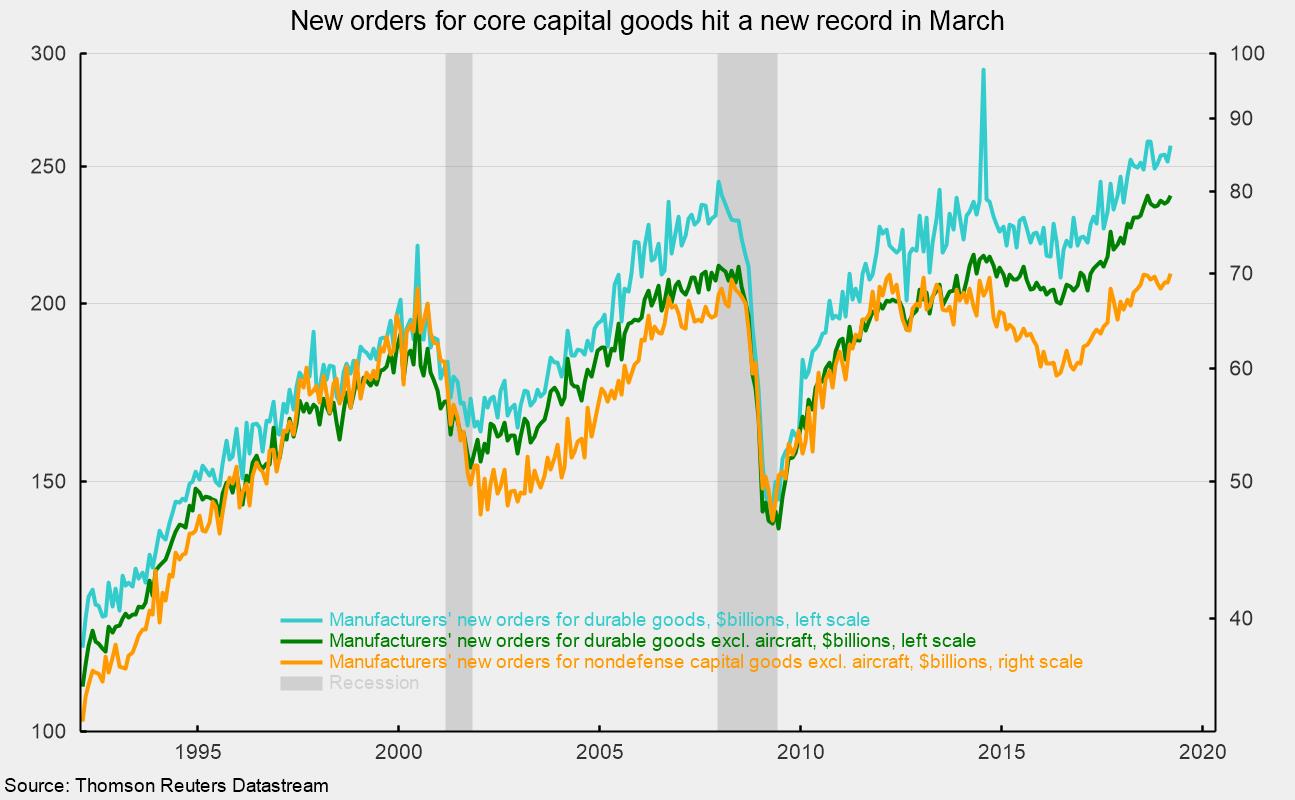Durable-Goods Orders Show Strength in March
New orders for durable goods jumped 2.7 percent in March, boosted by a 31.2 percent surge in nondefense aircraft and a 17.7 percent gain in defense aircraft. Because of the large per-unit price and the tendency for buyers to place orders for multiple aircraft at once, both of these series tend to be extremely volatile. If aircraft are excluded, new orders for durable goods increased 1.1 percent in March, the fourth monthly gain in the past five months. Since June 2016, new orders for durables excluding aircraft have been on a strong uptrend, rising 19.3 percent (see chart).
Within the report on new orders for durable goods are data on new orders for capital equipment, or business investment. This subcategory is particularly important for two reasons. First, business investment can have a major impact on future productivity trends, and productivity is critical for helping offset cost increases as well as raising living standards over the long term. Second, capital-goods orders are important as they tend to be early indicators of turns in the business cycle. Real new orders for core capital goods — that is, real nondefense capital goods excluding aircraft — is one of the indicators in AIER’s Leading Indicators index.
On a nominal basis, new orders for core capital goods rose 1.3 percent in March to a new record high (see chart). As with the broader durables-goods category, the trend of new orders for core capital goods has been solidly upward since mid-2016. New orders for core capital goods are up 18.0 percent since May 2016 (see chart again).
The results for other categories of durable goods shown in the report were generally positive in the latest month. Among the industries showing increases, communications equipment rose 9.0 percent for the month and was up 5.7 percent for the first three months of 2019 versus the same period last year; the motor vehicles industry was up 2.1 percent for the month and up 8.3 percent in 2019; machinery orders were up 0.3 percent, pushing the year-to-date gain to 1.6 percent; the catchall “other durables” category rose 0.2 percent in March but was flat versus last year; and electrical-equipment and appliances orders were 0.1 percent higher in March and up 3.0 percent for 2019.
Categories showing declines for March are primary metals, down 1.8 percent, putting the year-to-date gain at 2.7 percent; computers and related equipment, off 1.9 percent in March but up 5.0 percent from 2018; and fabricated metal products, off 0.3 percent in March but up 3.8 percent year to date.
Other data out today include the latest weekly initial claims for unemployment insurance. For the week ending April 20, claims totaled 230,000, up 37,000 from the prior week. The four-week average came in at 206,000 versus 201,500 in the prior week. While claims rose in the latest week, they remain at historically low levels, suggesting the labor market remains very tight.
Today’s data are positive overall. The report on durable-goods orders provides additional evidence that the economy may be reaccelerating after a soft patch in late 2018 and early 2019. However, the preponderance of economic data are still mixed, suggesting a degree of caution is warranted.






